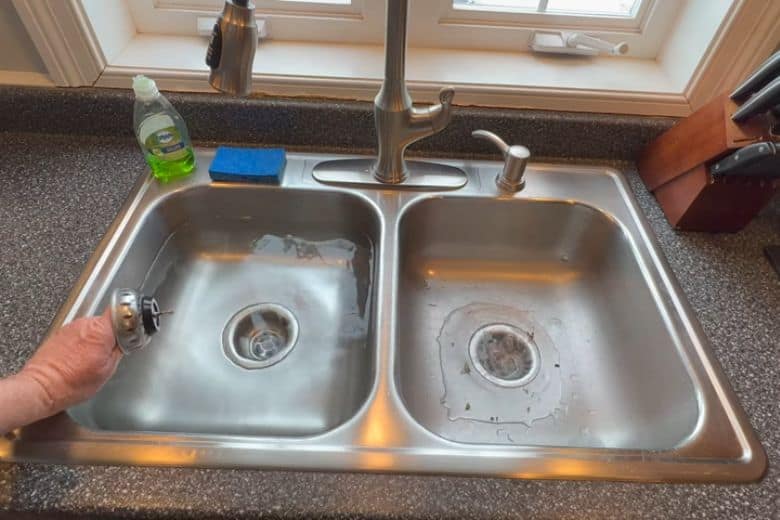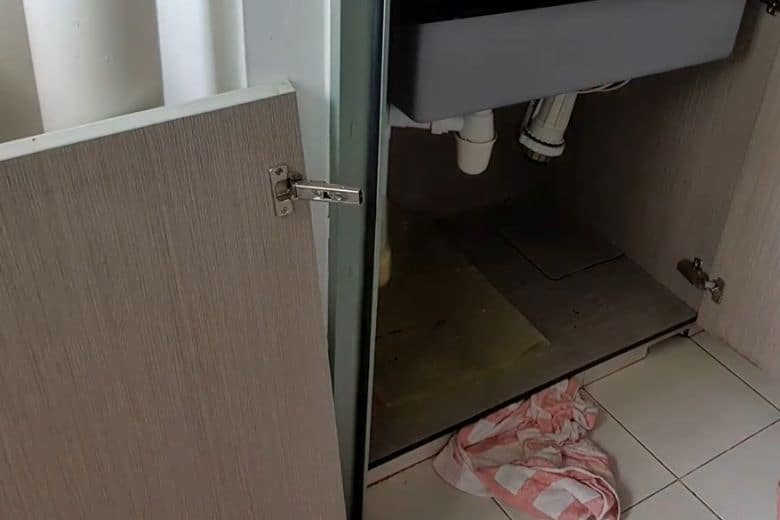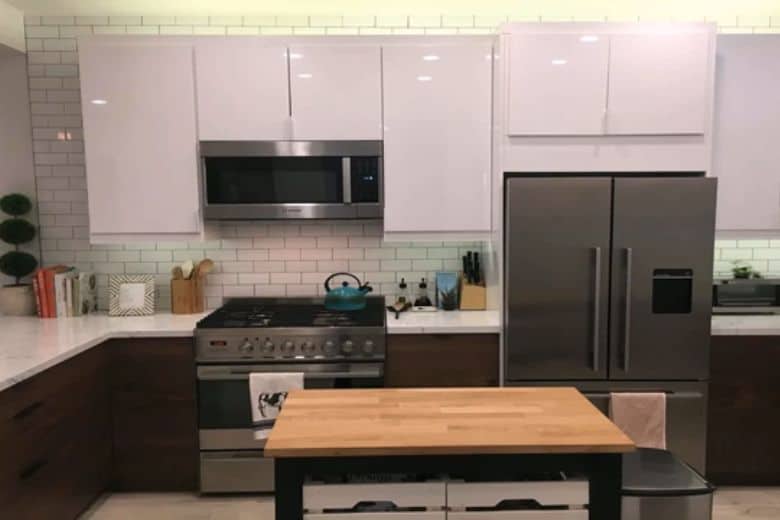The kitchen sink is an essential component of any household, typically functioning seamlessly for years due to its well-designed structure. Despite the fact, it may experience issues, particularly with its drainage system.
One such issue is when the kitchen sink drains into yard instead of the main sewer line. It could be due to a clog in the drain pipes, a damaged pipe, and other reasons. As a result, the intended path for the water from the kitchen sink that needs to flow into the municipal sewer line redirects it outside.
This drainage issue brings unsightly and smelly problems along with many unhygienic obstacles. But it is not an uncommon one.
Fixing these problems as soon as possible is necessary to keep the kitchen sink functioning properly.
Moving forward, let’s find out in the below section why the kitchen sink drains into the yard and the problem’s solution.
Reasons for Kitchen Sink Drains into Yard:
The kitchen sink draining into the yard can lead to a flooded yard and attract mosquitoes, leading to unpleasant odors. Quickly identify the cause, which is often a clogged drain or damaged pipes, and take steps to fix the problem.
However, there are five main reasons for the kitchen sink drain outside. Have a look.
1. Clogged Pipes
A clogged draining system is often the cause of a kitchen sink draining into the yard. Regular use of the sink for cleaning dishes, cooking items, and food disposal can result in a buildup of gunk, grease, residue, and debris in the pipes.
Over time, these substances can stick to the pipes, reducing their diameter and eventually causing a clog. As the clog worsens, the water drains more slowly and eventually overflows and drains outside, typically in the yard.
2. Broken Drain Pipes
Another common cause of kitchen sinks draining into the yard is damaged drainage pipes. Neglecting the maintenance of your home’s plumbing system over time can damage pipes. Additionally, fluctuations in temperature, particularly in colder regions, can cause pipes to break apart due to freezing.
Old and large trees near the home’s plumbing system can also pose a threat, as their roots can extend and damage the pipes as they grow stronger over time. When the pipes become damaged, it can result in the water from the kitchen sink draining outside instead of into the proper sewer line.
To prevent this from happening, it’s important to regularly maintain your plumbing system and promptly address any signs of damage.
3. Poor Drainage System Design
In some instances, the issue with kitchen sinks draining into the yard is not a result of clogs or damaged pipes but rather a poorly designed drainage system.
It may also happen due to the drainage pipe’s inappropriate angle, or the pipes’ slope needs to be corrected.
If the drainage system is poorly designed, you will see the waste backing up and draining into the yard instead of properly disposed of through the sewer line.
4. Blockage Garbage Disposal
Blockage in the garbage disposal can contribute to kitchen sink drains overflowing into the yard. When waste accumulates and clogs the disposal, it can cause the sink to back up and drain outside the proper drainage system.
5. Deterioration of Drainage System
In older homes, the drainage system can deteriorate due to changes in the climate which can cause pressure on old concrete pipes. Over time, the joints of these pipes may separate and fall apart, leading to damage to the drainage system.
This can result in the kitchen sink draining into the yard instead of the designated location.
6. Impact of Nature on Drainage System
Nature can have a significant impact on the kitchen sink’s drainage system. Trees and plants with growing roots can penetrate even small cracks in the plumbing pipes, causing blockages that can affect the sink’s proper drainage.
Rodents can also contribute to these blockages, leading to an overflow and draining the sink in the yard.
Solution for Kitchen Sink Drains into Yard:
To resolve draining issues with your kitchen sink, it’s tempting to attempt a DIY fix. However, before attempting a repair, it’s important to identify the cause of the issue.
If the issue is a damaged draining pipe, it’s best to call a plumber or construction worker to replace it.
On the other hand, if the issue is clogged pipes, it’s a simple fix, and you can do it at home. Let’s explore the steps to unclog a kitchen sink drain.
Arrange all needed equipment:
To effectively unclog your kitchen sink drain, you must gather the proper tools. Having the right tools will make the unclogging process easier and more efficient.
Here is a list of tools you may need:
- Plumbing snake or auger
- A plunger
- A drain opener
- Vinegar and Baking Soda
- Coat Hanger
- Boil water
However, the specific tool you need to use may vary depending on the location of the clog. Let’s explore the use of each of these unclogging tools.
Technique 1: Use a Plunger to Unclog a Kitchen Sink Drain
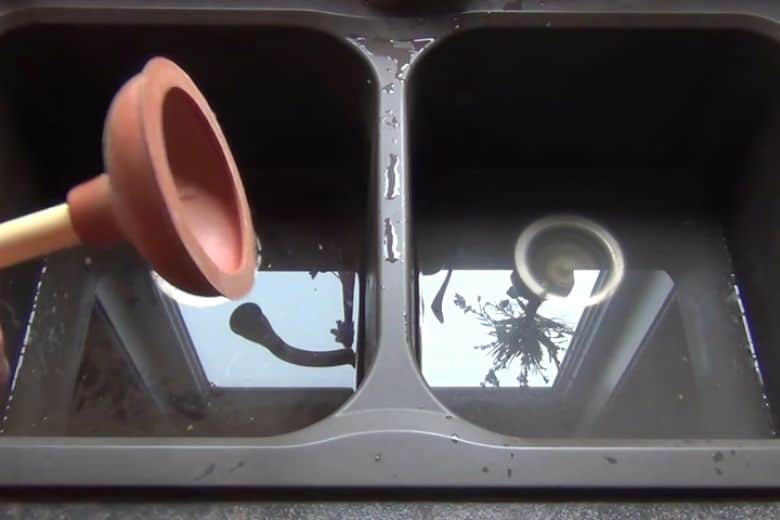
Step 1: Remove the sink stopper
- Detach the sink stopper from the connecting nuts under the sink
- Position the plunger over the sinkhole and draining pipe
Step 2: Use the plunger
- Begin using the plunger to create a vacuum in the draining pipe
- Repeat the process multiple times to remove as much debris as possible
- Note: A plunger is effective for slow-draining pipes, not fully clogged ones.
A plunger is a simple, easy-to-use tool that can help unclog a kitchen sink drain. The vacuum at the top of the plunger collects debris and particles from the plumbing system. To use a plunger, first, remove the sink stopper and position the plunger over the sinkhole and draining pipe.
Using the plunger creates a vacuum in the draining pipe that helps remove debris and residues. Repeat the vacuuming process multiple times to unclog the pipe.
Technique 2: Use Boiling Water
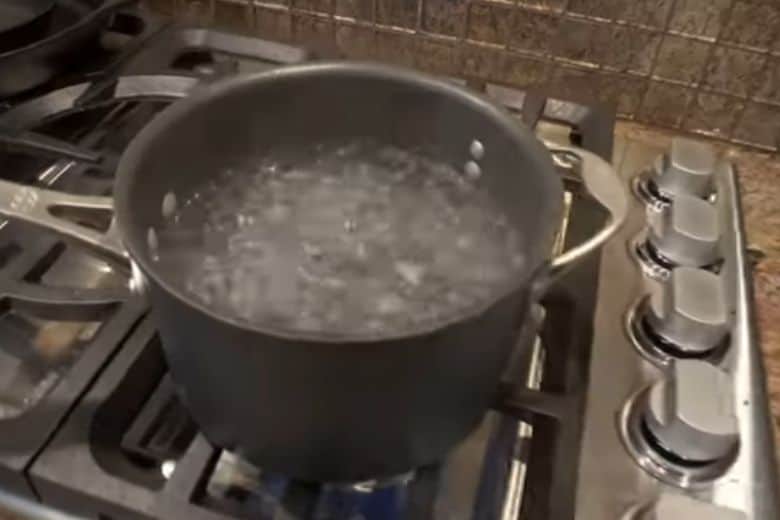
Step 1: Pour boiling water
- Slowly pour boiling water through the clogged drainage pipe
- The boiling water will remove the gunk and residues
- Soften any hard residues for easier removal
Step 2: Use a plunger (optional)
- After flushing hot water through the pipes, use a plunger to vacuum any softened debris
Pouring boiling water through a clogged kitchen sink drain can help remove debris and soften any hard residues. This method is effective for minimally clogged pipes. Pour boiling water slowly through the drainage pipe to remove gunk and residues. You can also use a plunger to vacuum any softened debris after flushing the hot water through the pipes.
Technique 3: Use Vinegar and Baking Soda
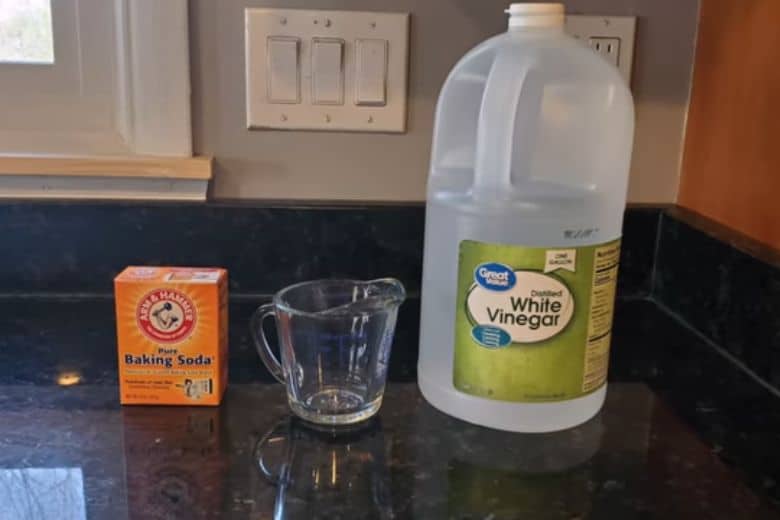
- Remove Stagnant Water: Take out any collected water in the sink basin.
- Baking Soda: Pour 1 cup of baking soda down the clogged sink drain.
- Vinegar: Follow the baking soda with 1 cup of white vinegar or apple cider vinegar.
- Wait: Cover the drain opening and let it sit for 15 minutes.
- Rinse: After 15 minutes, uncover the drain and pour hot water to flush out the clog.
Note: You can also try mixing baking soda, salt, and vinegar for alternative unclogging solutions.
Technique 4: Use a Plumbing Snake to Unclog Your Kitchen Sink
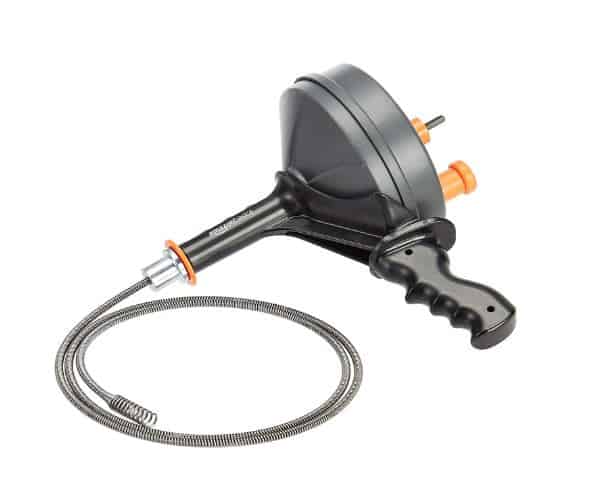
A plumbing snake may be your solution when your kitchen sink suffers from a massive clog. A plumbing snake is a long metal rod with coils that resembles a metal spring. It’s a professional tool used by plumbers to remove blockages from pipes.
Steps:
- Depending on your needs, you can choose a plumbing snake of different lengths. The longest plumbing snake can be up to 90 feet long, but smaller sizes are also available.
- Before inserting the plumbing auger into the drain pipes, you must remove the sink stopper.
- You can now insert the plumbing auger into the sink drain pipes. The snake should reach the clogged area where the blockage is located.
- If the plumbing snake gets stuck to something, start twisting it. You may need to repeat this process multiple times until the clog is removed.
- Once the pipes have been unclogged, you can remount the sink stopper.
- Finally, turn on the sink faucet and see if it’s still draining in the yard. The sink should drain properly if the plumbing snake has done its job.
A plumbing snake is a simple and effective way to unclog your kitchen sink. This method solves the draining issue without resorting to harsh chemicals that could damage your pipes.
Technique 5: Check the Garbage Disposal
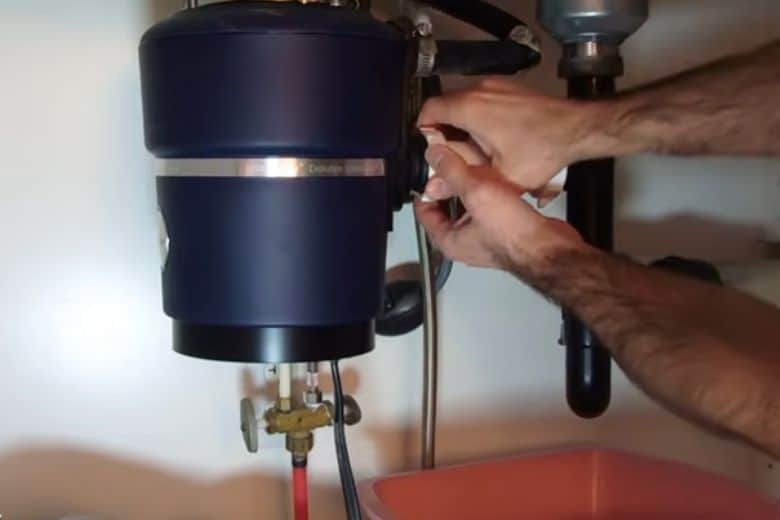
Point 1: Examine the Garbage Disposal
Inspect your garbage disposal if you have one, as it may be the source of the clog. Your sink and garbage disposal are interconnected through a pipe that runs through your home.
It is a common occurrence for food particles and debris to accumulate in the hoses connecting them, causing clogging.
Point 2: Attempt to Clear the Clog
If the clog is present, it may be enough to run the garbage disposal. To fix this, try resetting the disposal or removing the blockage by turning it on. If the disposal is overheated or not functioning, rebooting or restarting the garbage disposal may be necessary to clear the clog completely.
Technique 6: Cleaning the P-Trap
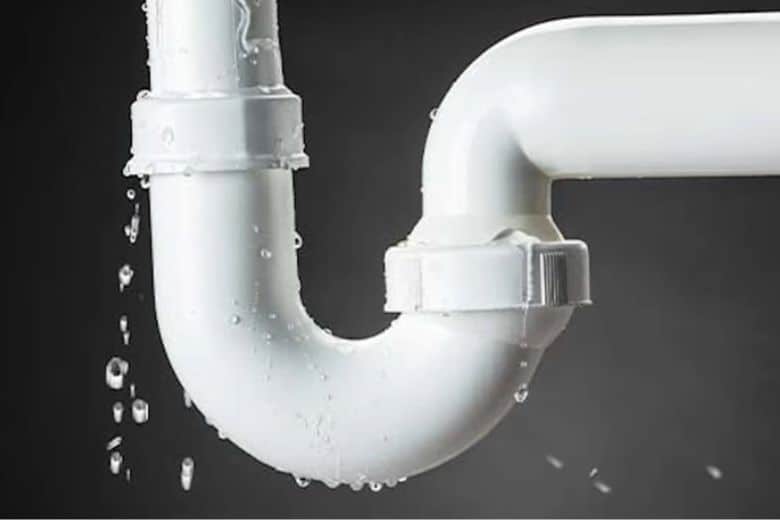
The P-trap is the curved pipe located under your sink, and it can accumulate food, grease, and other debris, slowing down or blocking water from flowing freely down the drain. To keep your sink functioning smoothly.
Here’s how to clean the P-trap:
- Prepare a bucket to catch any water or debris that may come out of the P-trap.
- Disconnect the connectors that secure the curved portion to the vertical and horizontal drainpipes.
- Remove the P-trap and clean it thoroughly of any buildup.
- Reinstall the trap by aligning it carefully with the rubber seals.
- Test the drain by turning on the faucet and letting water flow down the drain.
Kitchen Drain Maintenance System: To Keeping Your Drain Pipe unclogged
1. Regular Cleaning
Maintaining a clean kitchen drain is the first step to keep it clog-free. Ensure to regularly remove any food particles and other debris from the sink. You can use a filter to catch food particles before they go down the drain. It will prevent them from collecting and clogging the pipes.
2. Use Boiling Water
Running boiling water down the drain once a week can help to clear any buildup of grease and food particles in the pipes. Boiling water is an effective way to remove buildup that can cause clogs in your kitchen drain.
3. Avoid Certain Substances
Avoid pouring grease, oil, and fats down the kitchen drain. These substances can solidify and cause clogs in your pipes. It is also advisable to avoid putting hard-to-grind food particles such as bones, coffee grounds, and eggshells down the drain.
4. Maintain Garbage Disposal
If you have a garbage disposal, it is crucial to take good care of it. Regular cleaning and maintenance will prevent clogs from forming in the disposal and the drain pipes.
5. Call a Plumber
In the case of persistent clogs, it’s best to call a professional plumber to assess and fix the problem. They have the tools and expertise to unclog the most stubborn clogs and prevent future blockages from occurring.
By following these steps, you can maintain a clean and functional kitchen drain, ensuring it runs smoothly for years to come.
Frequently Asked Questions
Can the kitchen sink be drained outside?
Answer: Discharging the kitchen sink water into the home’s main wastewater system is an option. Additionally, you can direct the water into an outdoor drywell or French drain, which enables the use of a garbage disposal.
Where does the water from my kitchen sink go?
Answer: The water from your kitchen sink will flow into the main sewer line of your home. In case it drains outdoors, inspecting the pipes for clogs and any potential damage is important.
Is sink water and toilet water routed to the same location?
Answer: Yes, every drain in your home leads to a singular pipe that transports used water from your house to the sewer line in the street. This includes the toilet, shower, sink, washing machine, dishwasher, and other water-using fixtures in your home.
Conclusion
The draining of a kitchen sink into the yard is an uncommon situation. To resolve this issue, you must first determine the cause of the outdoor draining. Clearing clogs in the drain pipe is often the solution. However, if the pipe requires replacement or repair, it is best to seek the help of a professional plumber.
It will prevent further damage to the pipe and minimize the costs of extensive replacements.
Paul Newman is a blogger who writes about plumbing and home improvement. Over the past 20 years, I have worked as a plumber. My passion is to share my knowledge and experience with others to improve their homes.

